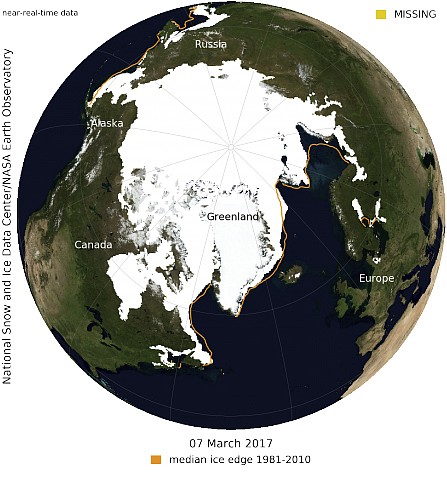WASHINGTON (AP) - The frigid top of the Earth just set yet another record for low levels of sea ice in what scientists say is a signal of an overheating world.
The National Snow and Ice Data Center in Colorado says the Arctic this month set a record low for winter peak sea ice area: 5.57 million square miles (14.42 million square kilometers).That's about 35,000 square miles (97,000 square kilometers) below 2015's record.
Center Director Mark Serreze says the less ice that grows in the winter, the deeper the melt problem is in the Arctic in the crucial summer. More areas will likely be ice-free.
Serreze says what's happening is important because Earth is losing a key part of its climate system.
Satellite records go back 38 years.
